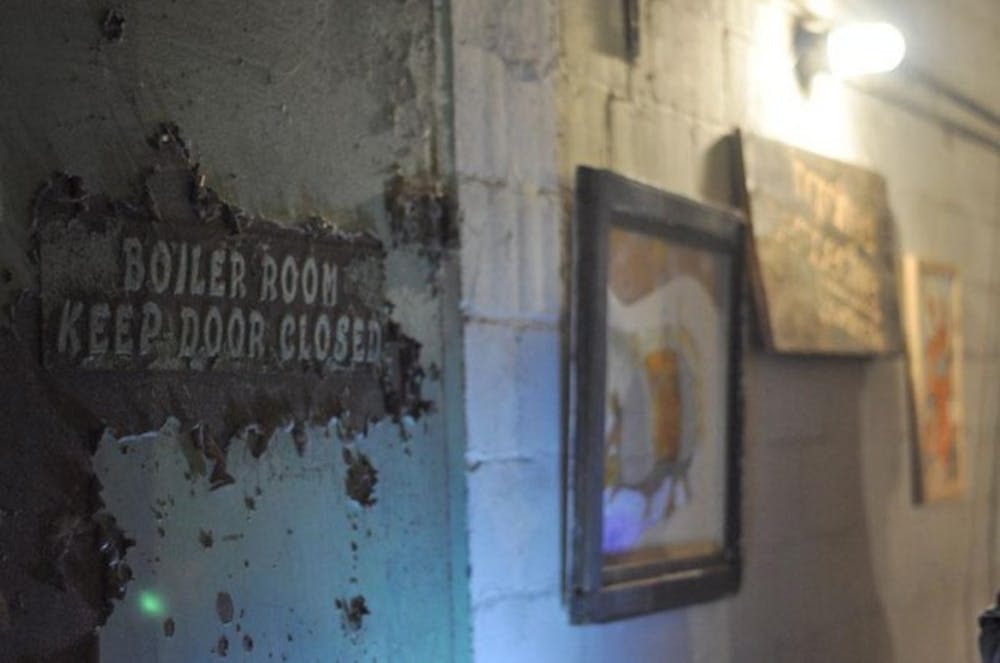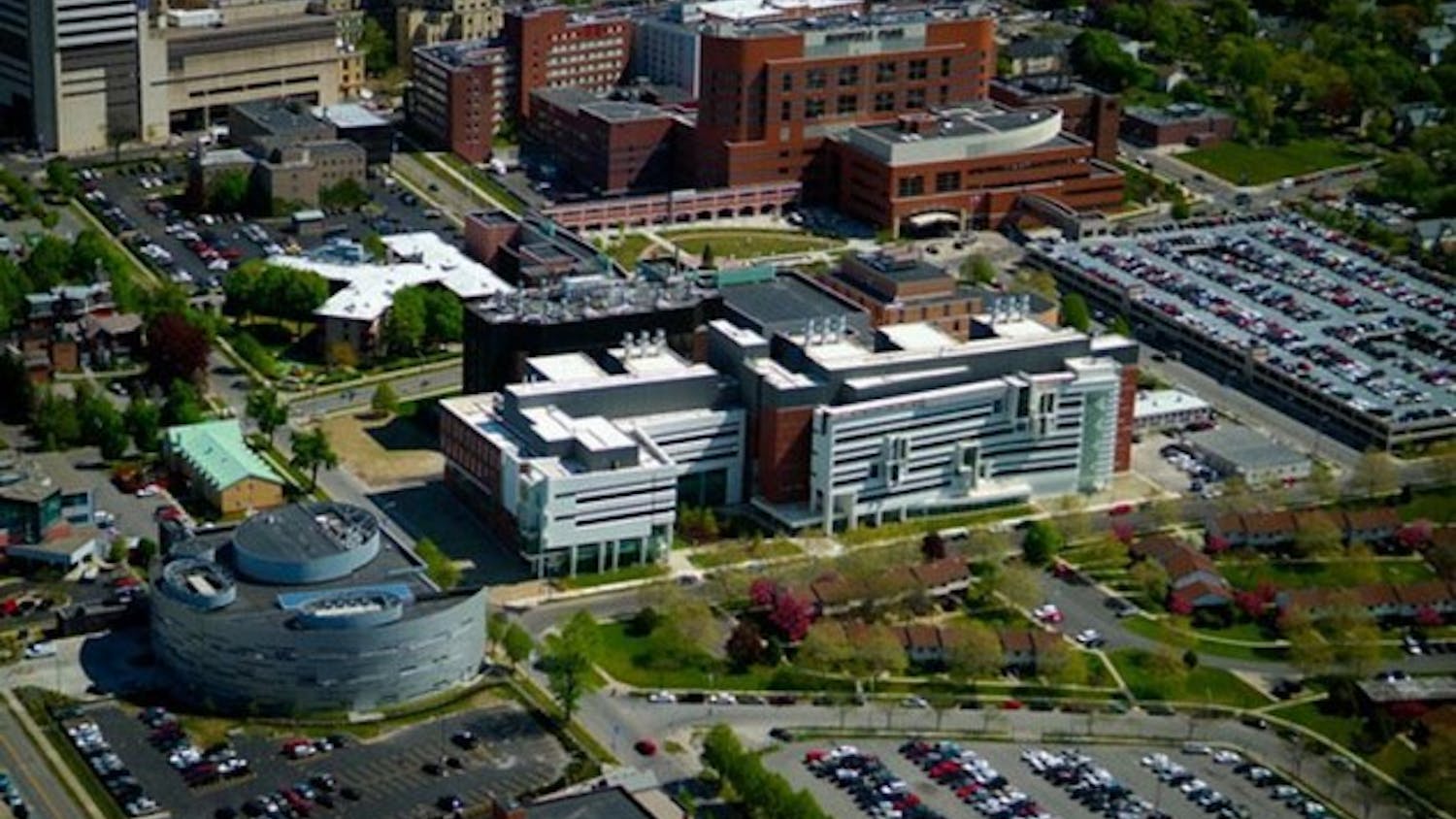It was still two hours from dawn's break as a lone car rolled into the gas station. The warm, dark air surrounded 49-year-old Thomas Bittner, associate professor of philosophy and geography at UB, who stepped out of his vehicle to get coffee. This was his morning ritual before heading off to photograph the ghostly remains of what was once Buffalo's life source - Silo City.
Silo City, a photo collection of Buffalo's abandoned grain elevators, opened last Friday night at Queen City Gallery, and it is Bittner's first photography exhibit.
In one photograph, early morning light shines through shattered glass windows - the cracked and jagged edges reached out to the sun. In another, blackened ladders climb atop each other, evoking a kind of metallic and jaded strength worn through years of disuse. Cobwebs, dust and dirt take the limelight in others.
According to Bittner, the architecture, lines and different shapes of Silo City make the abandoned landmark an ideal photographic experience.
Bittner is a man of detail. The elements used in his photographs - natural and man-made - are given such special attention that they almost seem to have a life of their own. And yet, in all this photographed energy, a hollowness and sadness about the silos' past glory can still be felt.
"His pictures show the outside approaching into Silo City and what's inside," said senior social sciences major Elizabeth Collins. "It is almost like you're walking through it - you're walking through a story about Silo City."
Bittner felt drawn to the haunting beauty of Silo City after a journalist friend introduced him to the people who were in charge of it.
"They were very passionate about this space, and this influenced me immediately. So I could immediately relate to that," Bittner said. "Not everyone can tell a story [about Silo City] with that kind of light in their eyes."
After he was granted permission to take pictures, Bittner visited the Silos 10 to 20 times over the summer, with each visit lasting around three to four hours.
Bittner used a Nikon D3 to capture the silos.
"I got tenure last year, so this is my tenure present to myself, so to speak," he said.
Michael Mulley, 49, the owner and curator of the Queen City Gallery, strongly admires Bittner's photography.
Bittner is also a member and contributing photographer to Mulley's other art space, the co-op College Street Gallery on Allen Street.
"[Bittner] really does have a keen eye to not make things too artificial," Mulley said. "His work is really strong. He has a great eye for composition, and that's the biggest thing: composition and exposure."
Bittner has never had any formal training in photography, but he has been creative in pursuing the skill by using the Internet as a resource.
He started taking photos after moving to Buffalo from Germany in 2006 and claims photography was his way of keeping memories alive.
"If you're a scientist or in academics, you get to travel a lot," Bittner said. "You go to all these fancy places and you just forget it after a while. That's why I started taking photos, just in order to have memories of those nice places."
Silo City is now one such place captured on Bittner's lens that will always be remembered.
Silo City will be on Queen City Gallery's walls till Nov. 9.
Email: arts@ubspectrum.com





